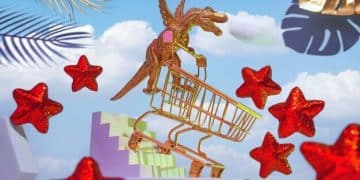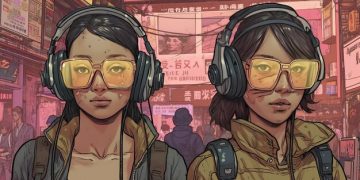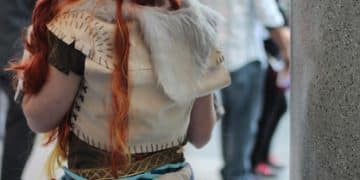Anime’s Impact on US Animation: Western Animators and Anime Styles
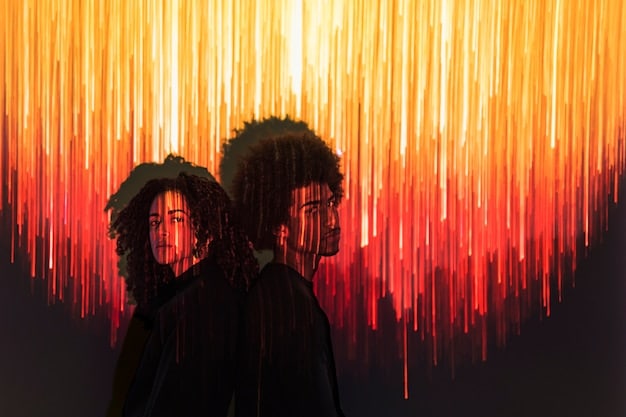
Anime’s influence on US animation is evident in the adaptation of anime styles by western animators, blending elements like character design, storytelling, and action sequences to create diverse and engaging animated content.
The influence of anime on global animation is undeniable, and the US is no exception. Western animators are increasingly incorporating elements of anime into their work, creating a fascinating fusion of styles. This article explores anime’s influence on US animation: how are western animators adapting anime styles?, examining its impact on character design, storytelling, and the overall aesthetic of animated content.
The Rising Popularity of Anime in the US
Anime, short for Japanese animation, has experienced a surge in popularity in the United States over the past few decades. Once a niche interest, anime has now become a mainstream form of entertainment, captivating audiences of all ages. But how exactly did anime, with its unique storytelling and visual style, captivate the American audience?
Cultural Exchange and Global Accessibility
The increasing accessibility of media through streaming services has played a significant role in anime’s rise. Platforms like Netflix, Crunchyroll, and Funimation have made a vast library of anime titles readily available to viewers in the US. This accessibility has reduced the barriers to entry for new fans and allowed anime to reach a wider audience than ever before. Furthermore, cultural exchange programs and increased interest in Japanese culture have also contributed significantly, highlighting the unique and creative aspects of anime to American audiences.
Breaking Stereotypes and Expanding Genres
Anime offers a diverse range of genres and themes that appeal to a broad audience. From action-packed series like “Attack on Titan” to heartwarming stories like “Kiki’s Delivery Service,” anime caters to various tastes and preferences. Moreover, anime tackles complex themes such as morality, identity, and societal criticism in ways that resonate with viewers. This variety allows anime to break free from the notion of being solely for kids, attracting older viewers looking for more nuanced and mature content. The depth of storytelling and character development found in many anime series has proven to be a winning formula for attracting and retaining audiences in the States.
The increasing popularity of anime in the US is a testament to its unique appeal and cultural significance. As audiences embrace anime’s diverse storytelling and distinct visual style, western animators are increasingly taking note of its influence.
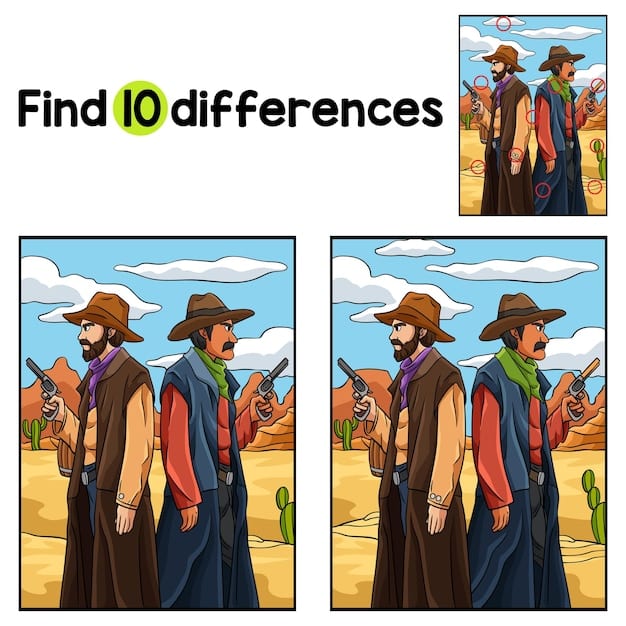
Key Elements of Anime Style
Anime stands out due to several distinctive elements that contribute to its unique style. From the visual design to the storytelling techniques, anime has a set of characteristics that have captivated audiences around the world. What separates anime from other forms of animation?
Distinctive Visual Style
One of the most easily recognizable aspects of anime is its highly stylized visual design. Characters often feature large, expressive eyes that convey a wide range of emotions. Hair is another key element, frequently styled in elaborate, gravity-defying ways. The use of vibrant colors and dynamic action sequences further enhances the visual experience. These elements combine to create a distinct and iconic look that sets anime apart from other animation styles.
Narrative Structure and Themes
Anime often tells complex and engaging stories, sometimes spanning hundreds of episodes. The narrative structure can be elaborate, with multiple interwoven plotlines and character arcs. Anime can also be very thematic, and is known for tackling mature themes such as loss, existentialism, and sociopolitical issues, often exploring the complexities of these themes in a nuanced way. Many anime series are known for their in-depth exploration of characters and their relationships, allowing viewers to connect emotionally with the stories.
Influence on Character Design
Anime’s impact on character design is particularly noticeable. The large, expressive eyes, elaborate hairstyles, and varied body types have all been adopted by western animators. By incorporating these elements, western animated series can create characters that are more visually appealing and emotionally expressive. Western animators can draw inspiration from the diverse range of character designs in anime, from the cute and whimsical to the serious and imposing, to create characters that resonate with audiences.
- Expressive Eyes: Large, detailed eyes that convey emotions effectively.
- Dynamic Action: Fast-paced and visually stunning action sequences.
- Thematic Depth: Exploration of complex and mature themes.
- Character Development: In-depth exploration of characters and relationships.
These key elements combine to create a unique and compelling animation style that has resonated with audiences worldwide. By understanding these elements, we can better appreciate the extent of anime’s influence on US animation.
Examples of Anime Influence in US Animation
The influence of anime is not just theoretical; it can be seen in various US animated shows. Many popular series have incorporated anime-inspired elements into their storytelling and visual styles. Where can we recognize the specific traces of anime influence in modern American animation?
Avatar: The Last Airbender
One of the most prominent examples of anime’s influence in US animation is “Avatar: The Last Airbender.” The series seamlessly blends Western storytelling with anime-inspired action sequences and character designs. The dynamic fight scenes, elemental bending abilities, along with the deep character development all bear resemblance to classic anime series. “Avatar” has been praised for its unique fusion of cultures and animation styles and has won lots of accolades for its storytelling.
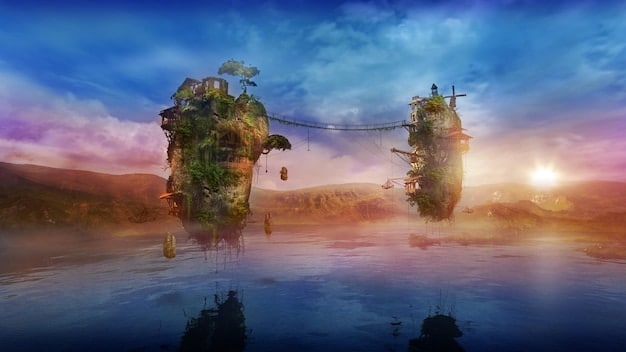
RWBY
“RWBY,” created by Rooster Teeth, is another example of a US animated series heavily influenced by anime. The show features a team of young warriors who train to fight monsters in a world inspired by anime and video games. The character designs, action sequences, and overall aesthetic of “RWBY” closely resemble anime, making it a popular choice among anime fans. Some western animators and production companies have come out and professed their adoration for anime and have worked to incorporate anime elements into their productions.
The Boondocks
Though primarily known for its satirical humor, “The Boondocks” also draws from anime. The series features dynamic action sequences and stylistic flairs reminiscent of anime, particularly in its fight choreography and visual effects. This blend of styles adds an extra layer of visual appeal to the show’s sharp social commentary. Also, many of the background designs and locations have striking resemblances to common anime settings. This type of influence helps to bring a unique edge to many of the episodes.
These examples demonstrate how anime’s influence is shaping the landscape of US animation, leading to a diverse and innovative range of animated content. The fusion of anime elements with Western storytelling continues to push boundaries and create a new generation of fans who appreciate both styles.
How Western Animators Adapt Anime Styles
Western animators are creatively adapting anime styles in ways that enhance their storytelling and visual appeal. While not simply replicating anime, they borrow significant elements and integrate them into their own unique styles. How are Western animators incorporating anime elements into their work?
Hybridization of Styles
Many western animators are adopting a hybrid approach, blending traditional Western animation techniques with anime-inspired elements. This hybridization allows them to create a unique aesthetic that appeals to a broad audience. They may incorporate anime-style character designs into a traditionally Western-style story or vice versa. This allows them to create something unique that is inspired by outside sources.
Incorporating Anime Techniques
Western animators are also incorporating specific techniques from anime, such as dynamic action sequences, speed lines, and visual metaphors. These techniques add a sense of energy and excitement to their work, captivating viewers with stunning visuals. Many animators cite that incorporating anime elements helps to make their work more engaging and visually appealing.
Experimentation and Innovation
The adaptation of anime styles allows western animators to experiment and innovate, pushing the boundaries of what is possible in animation. By drawing inspiration from anime, they can create new and exciting content that resonates with audiences in unexpected ways. This continual experimentation ensures that animation remains a vibrant and evolving art form. Also, this push allows for new and creative content to appear and can make it easier for newcomers to stand out.
- Character Expression: Enhanced emotional range through anime-inspired facial expressions.
- Action: Anime inspired action sequences add energy and excitement to visuals.
- Innovative Storytelling: Fusion of Western and anime narrative structures.
- Visual Appeal: Using a hybrid style with anime to be more appealing.
By creatively adapting anime styles, western animators are enriching the field of animation and creating new forms of visual storytelling. They bring together the best of both worlds, resulting in content that appeals to a diverse audience and pushes the boundaries of creativity.
Benefits and Challenges of Adapting Anime Styles
Adapting anime styles in US animation comes with both benefits and challenges. While the integration of anime elements can bring new creative opportunities, it also requires careful consideration and understanding. What benefits and challenges do Western animators face when adapting anime styles?
Bringing New Energy and Creativity
One of the key benefits of adapting anime styles is the infusion of new energy and creativity into US animation. Anime elements can add a fresh perspective to storytelling and visual design, captivating audiences with innovative content. By incorporating anime-inspired techniques, western animators can push the boundaries of what is possible and create truly unique work. This also allows the field of animation to continue to evolve and change with the times.
Preserving Originality
Another important challenge is maintaining originality while drawing from anime. It is essential for western animators to adapt anime styles in a way that complements their own unique voice and vision, rather than simply replicating anime wholesale. This requires a deep understanding of both Western and anime animation techniques, as well as a commitment to creating something new and authentic. The best way to approach this is to fuse anime elements into a style, to create a brand new hybridization that is unique.
Appreciating Cultural Context
Understanding and respecting the cultural context of anime is crucial. Anime is deeply rooted in Japanese culture, and western animators must be mindful of cultural sensitivities when adapting anime styles. It is important to avoid cultural appropriation and to approach anime with respect and appreciation. Western animators should aim to honor the cultural origins of anime while creating something new and meaningful for their own audience. This comes from a place of appreciation; not appropriation.
Addressing these benefits and challenges allows western animators to harness the power of anime influence while maintaining their unique identity and creative vision. By striking this balance, they can create animated content that is both innovative and culturally sensitive.
The Future of Anime Influence in US Animation
The influence of anime on US animation is likely to continue growing in the years to come. As anime becomes more mainstream, western animators will increasingly incorporate its elements into their work. What can we expect to see in the future of anime influence in US animation?
Greater Fusion of Styles
We can expect to see a greater fusion of styles as western and anime animation techniques continue to converge. This could lead to the emergence of new and hybrid animation styles that blend the best of both worlds. The fusion of western elements with anime can result in captivating visuals. We will most likely begin to see more and more new animation styles. With this convergence, western audiences may become desensitized to it.
Expanded Storytelling Possibilities
Anime influence will likely lead to expanded storytelling possibilities in US animation. Western animators may draw from anime’s diverse range of genres and themes to create more complex and nuanced stories. This could result in animated series that tackle mature themes and challenge viewers in new ways. This growth in content has the potential to bring more eyes to animation as a whole. As content grows, so do audiences.
Globalization of Animation
The increasing influence of anime is part of a larger trend of globalization in animation. As different cultures and animation styles blend together, we can expect to see more international collaborations and cross-cultural content. This globalization has the potential to create a more diverse and inclusive animation industry, where creators from all backgrounds can share their unique stories and perspectives, leading to more compelling storytelling. It has the potential to be an overall good thing.
In conclusion, the future of anime influence in US animation is bright. By embracing the creativity and innovation of anime, western animators can push the boundaries of what is possible and create a new generation of animated content that appeals to audiences worldwide.
| Key Point | Brief Description |
|---|---|
| 🎨 Anime’s Visual Style | Distinct character designs with large eyes and expressive features have been adapted by Western animators. |
| ⚔️ Action Sequences | Dynamic, fast-paced action scenes, a hallmark of anime, now frequently appear in US-produced animations. |
| 🎭 Storytelling | Deeper narrative depth and mature themes, common in anime, are increasingly explored in Western animations. |
| 🤝 Hybridization | A merging of Western techniques with anime elements allows for a unique, appealing aesthetic often seen in US series. |
Frequently Asked Questions
▼
Anime often features more stylized character designs, dynamic action sequences, and explores complex themes, while Western animation often emphasizes broader humor and simpler narratives but is also starting to evolve.
▼
Anime’s influence is seen in the adoption of elements like large, expressive eyes, distinctive hairstyles, and varied body types in US animated characters, enriching their visual appeal.
▼
Examples include “Avatar: The Last Airbender” for its action and character development, “RWBY” for its anime-inspired aesthetic, and “The Boondocks” for dynamic action.
▼
Adapting anime styles can bring new energy, creativity, and expanded storytelling possibilities to US animation, enhancing its appeal to a diverse audience.
▼
Challenges include maintaining originality while drawing from anime, understanding the cultural context, and avoiding cultural appropriation while respecting its origins.
Conclusion
Anime’s influence on US animation is creating a unique and innovative fusion of styles. As western animators continue to adapt and incorporate anime elements, the landscape of animation is evolving in exciting ways. This melding of cultures and creative techniques promises a vibrant and diverse future for animated content, appealing to audiences worldwide.

